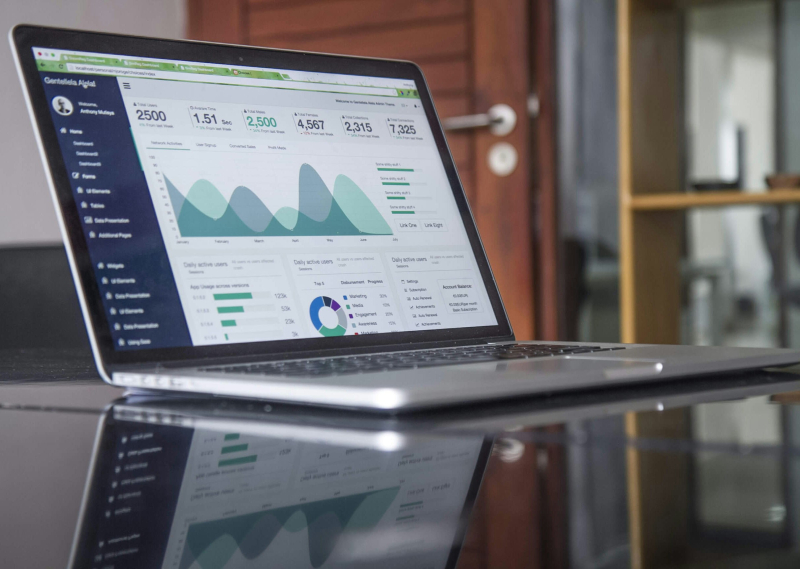When it comes to finance and business management, having a good grasp of working capital is vital.
Essentially, working capital represents a business’s liquidity and short-term financial health. It comprises two crucial components – current assets and current liabilities.
In this article, we aim to provide a comprehensive understanding of current assets and liabilities, their significance in determining your working capital liquidity, and what this means for your business.

What are Current Assets?
Current assets are assets a business expects to be converted into cash or used up within one year or its operating cycle, whichever is longer.
Some common examples of current assets include:
- Cash: This includes both physical cash on hand and funds held in bank accounts.
- Accounts Receivable: This represents the money owed to a business by customers who have purchased goods or services on credit.
- Inventory: Inventory includes raw materials, work-in-progress, and finished goods that are intended for sale.
- Short-term Investments: Investments that can be easily converted into cash within a short period, such as marketable securities.
Current assets are essential for a business’s day-to-day operations, as they provide the necessary funds to pay for expenses, purchase inventory, and cover short-term obligations. The higher your current asset levels, the more liquid your business is, and the better equipped you are to handle unexpected financial challenges.
What are Current Liabilities?
Current liabilities refer to the financial obligations a business is expected to settle within one year or the current operating cycle. These liabilities include debts and financial responsibilities which need to be paid off in the short-term.
Common examples of current liabilities include:
- Accounts Payable: Money owed to suppliers for goods and services received that have yet to be paid for.
- Short-term Loans: Loans that need to be repaid within a year, including lines of credit and working capital loans.
- Accrued Expenses: Expenses that have been incurred but haven’t been paid yet, such as salaries, utilities, and taxes.
- Short-term Debt: Debt instruments such as bonds or notes that mature within the next year.
It’s important to carefully manage your current liabilities, to ensure your business meets its financial commitments and remains solvent.
Understanding Working Capital and Liquidity
Working capital is a vital measure of a company’s liquidity and ability to meet short-term financial obligations. It is calculated as the difference between current assets and current liabilities.
The formula for calculating working capital is simple:
Working Capital = Current Assets – Current Liabilities
A positive working capital indicates that a company has more current assets than current liabilities. This is typically a healthy sign as it shows that the business has sufficient liquid assets to cover its short-term debts.
A negative working capital, on the other hand, suggests that a company may face difficulties in meeting its short-term financial commitments, which can be a red flag for investors and creditors, highlighting potential financial distress.

The Significance of Working Capital Liquidity
Working capital liquidity is crucial for several reasons:
- Operational Stability: Adequate working capital ensures that a business can continue its day-to-day operations smoothly. It allows for paying salaries, rent, utilities, and other essential expenses.
- Investment Opportunities: A healthy working capital position gives a business the flexibility to invest in growth opportunities, such as expanding product lines or entering new markets.
- Creditor Confidence: Suppliers and creditors are more likely to extend credit or favourable payment terms to a company with strong working capital. This helps to strengthen the business’s relationships with its stakeholders.
- Weathering Economic Downturns: During economic downturns or unforeseen circumstances, a robust working capital position can be a lifeline, helping a company to navigate through challenging times.
Managing Your Working Capital
To maintain optimal working capital liquidity, businesses should consider the following strategies:
- Streamline Inventory: Keep inventory levels in check to avoid tying up excess cash in unsold goods.
- Monitor Receivables: Implement efficient accounts receivable processes to ensure timely collection of outstanding invoices.
- Negotiate Terms: Negotiate favourable terms with suppliers to extend payment periods without incurring penalties.
- Debt Management: Carefully manage short-term debt and loans to avoid over-leveraging the business.
The financial health of your business in the short-term depends significantly on the availability of working capital, with the key factors of current assets and liabilities pivotal in influencing your liquidity and operational stability.
Effective management of these components will ensure that your business remains financially resilient and capable of taking advantage of growth opportunities.
Ledge Finance, one of Australia’s most trusted business finance brokers, has a professional team on hand to support you with your commercial financing needs.
Contact us today to see how we can help you and your business to secure its growth.
Please note that the information provided is general and does not constitute financial, tax or other professional advice. You should consider whether the information is appropriate for your needs and seek professional advice before making any decisions.





